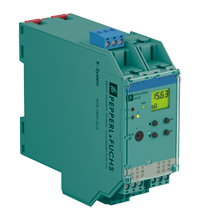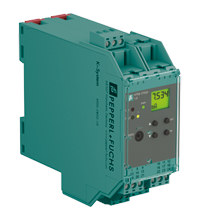Get in touch
enquiry@pcpelectric.sg
0
Trip Amplifier
In process automation, a trip amplifier serves a crucial role in monitoring and controlling industrial processes by detecting abnormal conditions or deviations from set parameters. Here’s an overview of trip amplifiers and their significance in industrial applications:
Trip Amplifier in Process Automation:
- Functionality:
- Alarm and Trip Point Detection: Trip amplifiers monitor analog signals from sensors (such as temperature, pressure, or flow sensors) and compare them against predefined setpoints or thresholds.
- Condition Monitoring: Detects deviations from normal operating conditions that may indicate equipment malfunction, process anomalies, or safety hazards.
- Output Control: Generates alarm signals or triggers shutdown sequences when abnormal conditions are detected, initiating corrective actions or emergency responses.
- Key Features:
- Setpoint Adjustment: Allows operators to adjust trip points or thresholds based on operational requirements and safety protocols.
- Relay Outputs: Typically equipped with relay outputs for activating alarms, triggering shutdowns, or controlling other devices in response to detected conditions.
- Hysteresis: Provides hysteresis settings to prevent rapid cycling of alarms or shutdowns due to minor fluctuations around setpoints.
- Integration: Interfaces with PLCs, SCADA systems, or DCS for centralized monitoring, control, and data logging.
- Applications:
- Safety Monitoring: Ensures safe operation by detecting over-temperature, over-pressure, or other critical conditions that could pose risks to personnel or equipment.
- Process Control: Maintains process integrity by monitoring variables like flow rates, levels, or quality parameters and initiating corrective actions to optimize performance.
- Environmental Monitoring: Monitors environmental conditions in industrial facilities to prevent pollution or comply with regulatory standards.
- Benefits:
- Enhanced Safety: Provides early detection of abnormal conditions, minimizing risks to personnel and assets.
- Operational Efficiency: Improves process reliability and uptime by promptly addressing potential issues before they escalate.
- Compliance: Helps meet regulatory requirements by ensuring adherence to safety and environmental standards.
- Cost Savings: Reduces downtime, maintenance costs, and potential losses associated with equipment failures or process disruptions.
Example Use Cases:
- Temperature Trip Amplifier: Monitors temperatures in industrial ovens or furnaces, triggering alarms or shutdowns if temperatures exceed safe limits.
- Pressure Trip Amplifier: Controls pressure levels in hydraulic systems or pipelines, activating safety measures if pressures reach critical thresholds.
- Flow Trip Amplifier: Ensures consistent flow rates in chemical processing or water treatment plants, alerting operators to deviations that could affect production.
Trip amplifiers are essential components in maintaining safe and efficient operations across diverse industrial sectors. Their ability to monitor and respond to critical conditions in real time helps organizations achieve operational excellence and ensure regulatory compliance.
If you have specific questions or need further information about trip amplifiers or their application in a particular industry, feel free to ask!
Display prices in:
SGD



